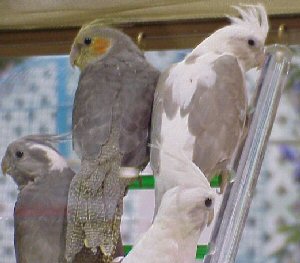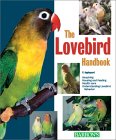The State of Avian Veterinary Research

Baby Cockatiels
Report from The American Federation of Aviculture Meeting
Lecturer: Darrell Styles, DVM
Department of Veterinary Pathobiology
The Schubot Exotic Bird Health Center
Texas A & M University
The Schobot Exotic Bird Health Center is one of the top research facilities in the United States where the study of exotic species, particularly large parrots and endangered birds, is the main focus of research. Dr. Darrell Styles, a lecturer in the Department of Veterinary Pathobiology, spoke at the most recent meeting of the American Federation of Aviculture. His lecture was very interesting, and will give you a good idea as to the current issues facing researchers in the field of avian medicine. This is the first in a multi-part series on the current status of avian research.Part I: Why Research Seems Painfully Slow
“We can practically build a chicken from scratch, we know so much about it. Not so for parrots.”
Darrell Styles, DVM
One of the most frustrating concerns of parrot owners is that it seems very little progress has been made in terms of treating such devastating diseases as proventricular dilatation disorder (PDD), psittacine beak and feather disease (PBFD), and polyoma. Only the latter has a vaccine that is currently used by veterinarians, although one has been in development for PBFD. One of the issues Dr. Styles discussed was how difficult it is to get the funding necessary for avian research. A telling statement made by Dr. Styles,
“Up until 20 years ago vets just checked for Newcastle’s [disease]; if they had it, kill them.”
In effect, truly substantial avian research, particularly of species largely considered “pets,” is a relatively new science. Dr. Styles mentioned that there is still some debate as to whether PDD is actually even a virus; much more research is needed if we are to find a cure or preventive vaccine for this terrible illness. The fact that exotic species have become more popular has helped in creating more awareness as to the need for greater research. As people become more involved and committed to parrots as pets, they want better veterinary solutions for the health problems facing their birds. In the past, funding has been based on the importance of an animal or bird to the “food and fiber” industry. Another issue that limits funding is the fact that there is no comparative pathology or biology between humans and birds the way there is between dogs or cats and humans. For this reason, the government is not particularly interested in supporting avian research unless it has to do with poultry and related illnesses, such as Newcastle’s disease.
Most funding comes from private grants and from aviculturists. Without that type of funding, it can be extremely difficult to engage in long-term research projects on such diseases as PDD and PBFD, which largely affect pet birds and have no impact on the poultry (i.e., food) industry. Dr. Styles emphasized that avian research depends on you, meaning all aviculturists and pet bird owners. By supporting regional veterinary research centers we support the future of our birds. According to Dr. Styles, most research programs have only one person running the lab with a post-doctoral resident and technician to help.
One of the issues facing researchers is that there are so many different types of parrot species, and many are vulnerable to specific disease entities. Dr. Styles said it best when he stated:
“A lory is about as different from a macaw as a dog is from a cow.”
Solutions to the problem of funding avian research can be approached from a local level. Local bird clubs, regional or national avian-related organizations, and individual aviculturists with a long-term commitment to pet bird species will need to come together to find ways to raise funds for better research. Without such resources, avian research will have to continue at the pace it has in the past. Individuals and clubs can specify what research project or even which researcher they want their donations to support. In terms of the Schubot Center, only 5% of donations are used for administrative purposes. For small donations, they do not use any of the money for administrative purposes, which is a nice policy if an individual would like to donate a small amount to further avian research.
Anyone interested in supporting these projects or other research can send tax-deductible donations to:
Schubot Exotic Bird Health Center
Texas A&M University, MS #4467
College Station, TX 77843
Some of the current research projects being conducted at the Schubot Center are:
Dr. David Phalen is studying the development of a test to determine if parrots who do not show signs, carry Pacheco’s virus
A team of researchers is studying megabacterium, a frustrating infection that has become a serious problem among budgerigars and cockatiels. Their research has shown that this entity resembles a fungus more than a bacteria.
Researchers are working to find better diagnostic tests for a variety of disease in pet and exotic birds.
They are also working on a red siskin reintroduction project, one that is trying to establish a population free of avian tuberculosis. Part of this project involves developing better diagnostic tests. Red siskins are highly endangered in Venezuela and Trinidad.
Part II will cover Dr. Styles comments on the status of research on specific diseases, such as PDD.









